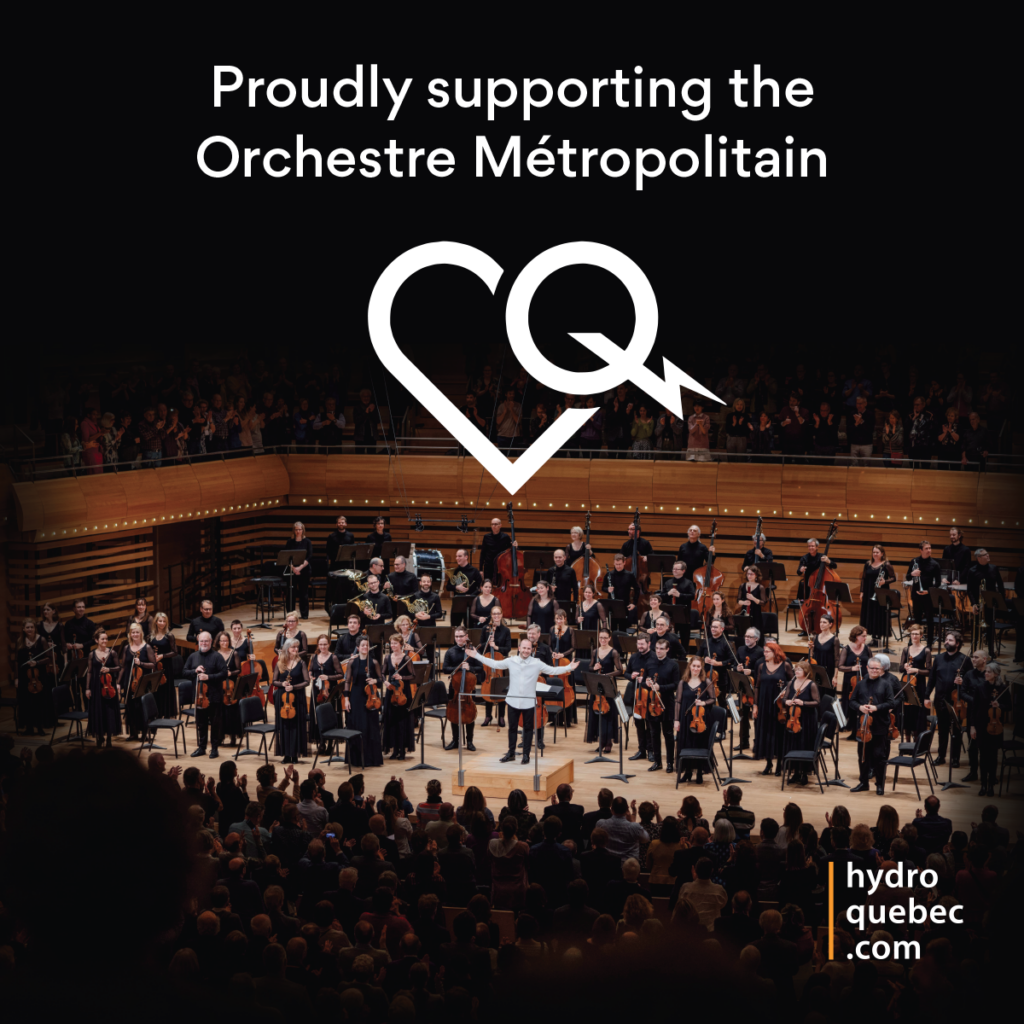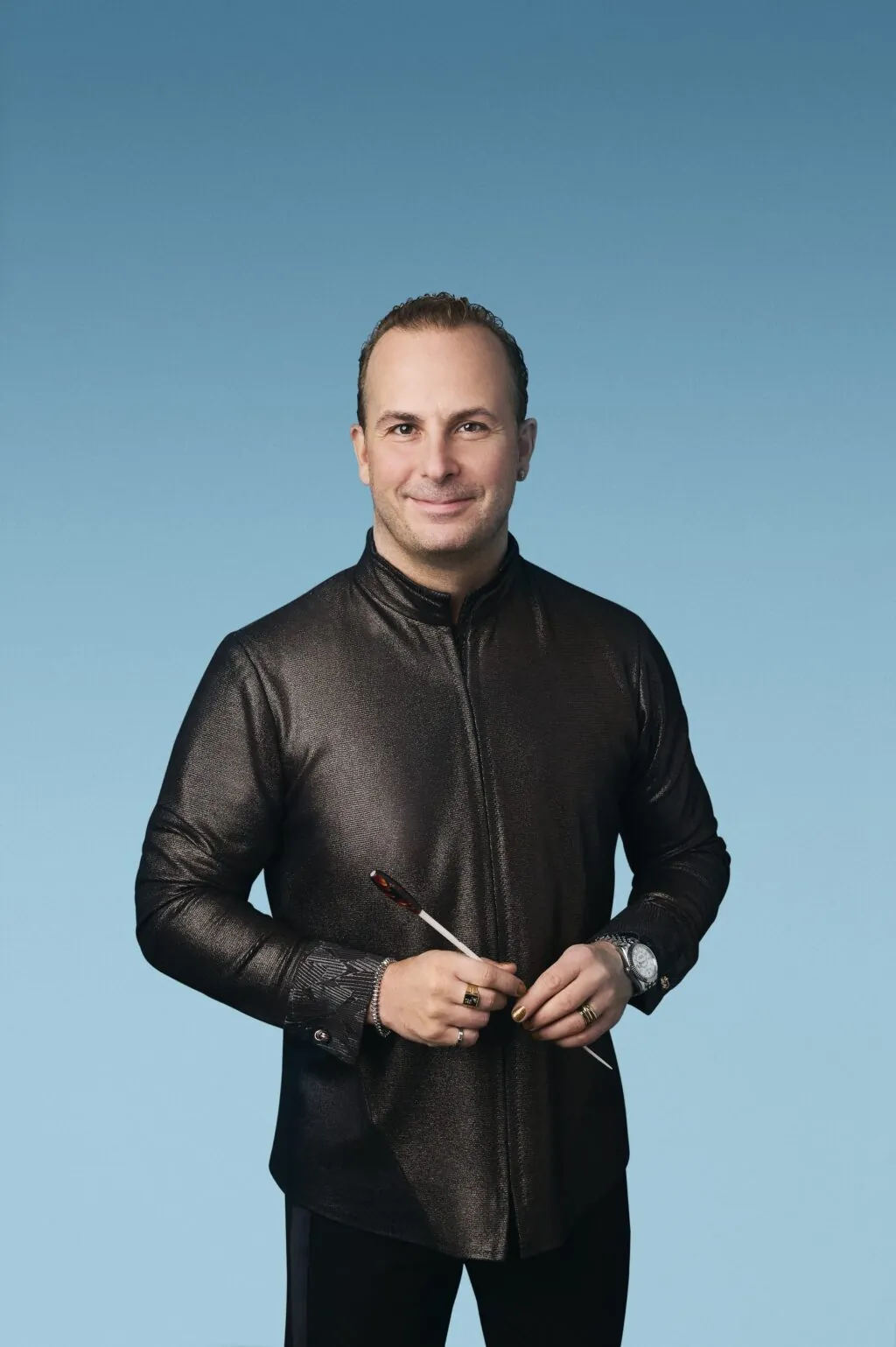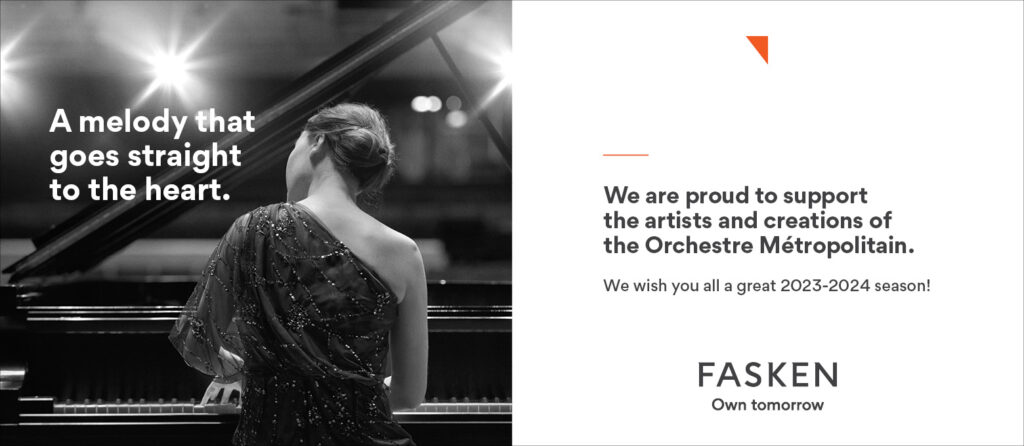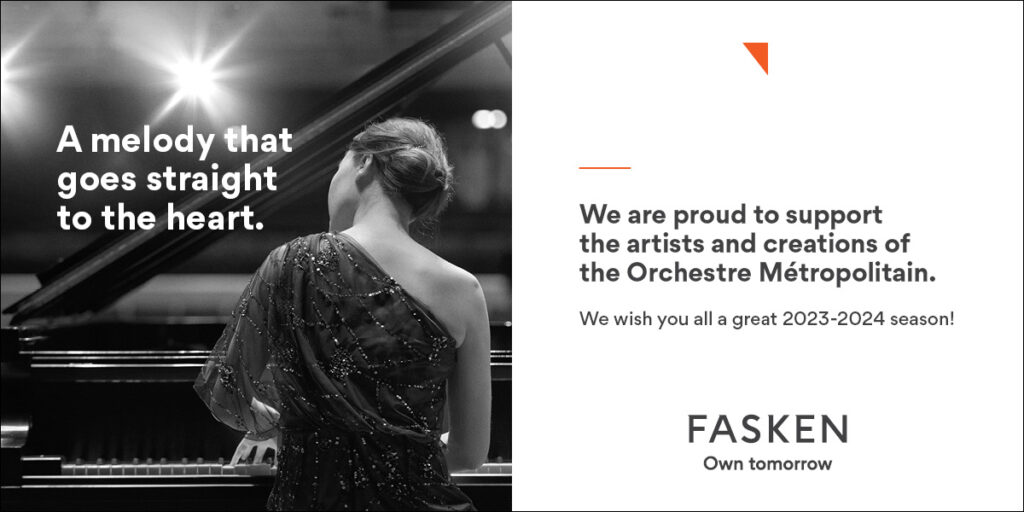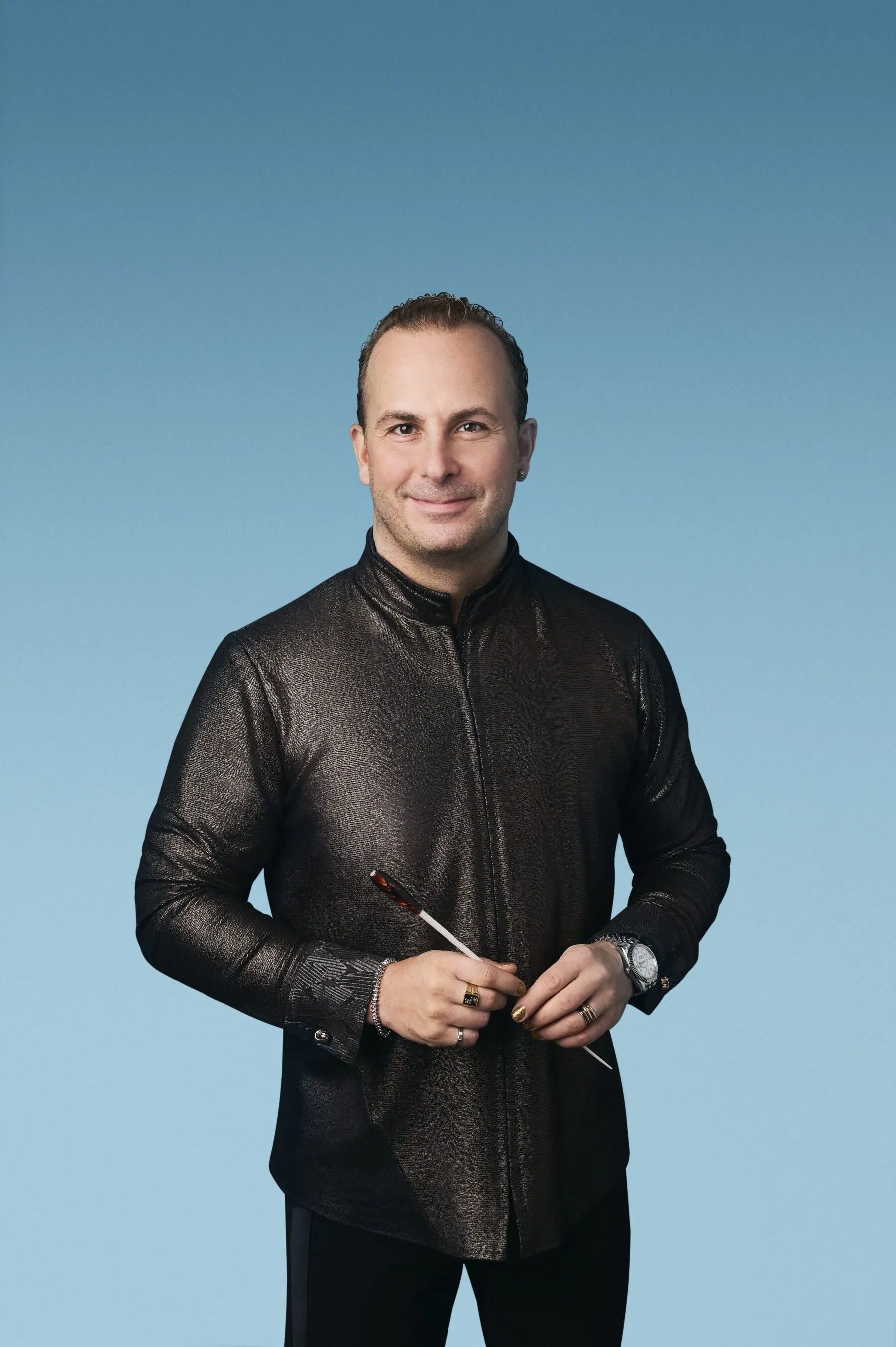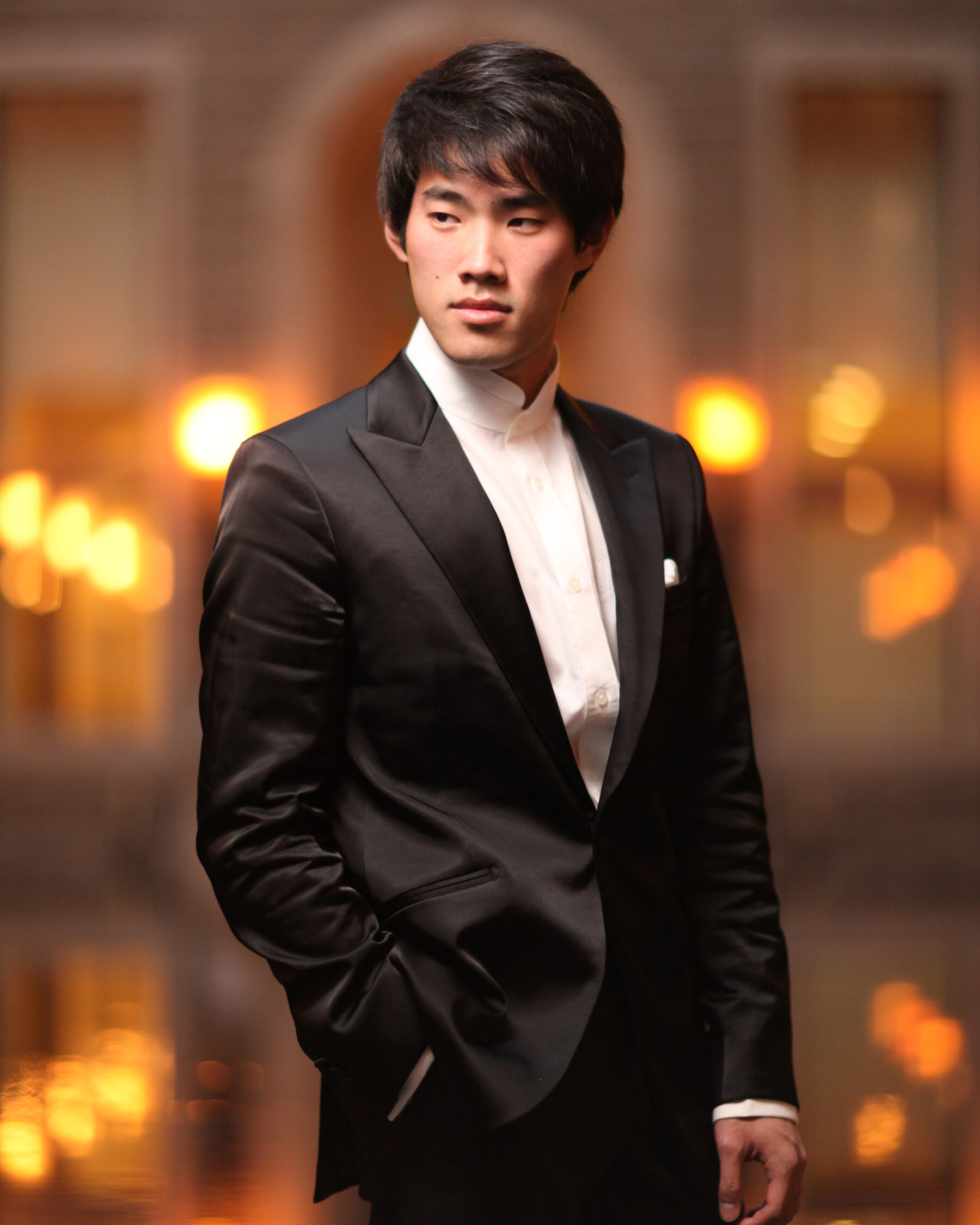Artistic Director and Principal Conductor of the Orchestre Métropolitain since 2000, to which he committed himself “for life” in 2019, Yannick Nézet-Séguin became, in September 2018, the third Music Director of the Metropolitan Opera (Met) in New York. Music Director of the Philadelphia Orchestra since 2012, he became its Artistic and Music Director in 2023 and renewed his contract until 2030. He is Honorary Conductor of the Rotterdams Philharmonisch Orkest, where he was Music Director from 2008 to 2018, and is also an Honorary Member of the Chamber Orchestra of Europe.
Yannick works with several prestigious orchestras and maintains a more special relationship with the Berlin and Vienna Philharmonics Orchestras, the Bavarian Radio Orchestra, the Chamber Orchestra of Europe and the London Philharmonic Orchestra, where he was principal guest conductor from 2008 to 2014. He has participated several times in the BBC Proms as well as in many festivals in Europe including those of Edinburgh, Lucerne, Salzburg and Grafenegg (Vienna). He was chosen to conduct the prestigious Vienna New Year’s Concert 2026. In North America, he regularly participates in the Lanaudière, Vail and Saratoga festivals as well as the Domaine Forget (Charlevoix). With the Philadelphia Orchestra and with the musicians of the MET Orchestra, he performs regularly at Carnegie Hall where he was an “Artist in Perspective” in 2019-2020. He also gives master classes, notably in two of the most renowned institutions, the Curtis Institute in Philadelphia and the Julliard School in New York. In Quebec, he directs an academy for young conductors linked to the Orchestre Métropolitain, in close collaboration with the Académie internationale du Domaine Forget.
He continues a long-term collaboration with the Festival La Capitale d’été in Baden Baden, where he conducts several orchestras in turn, including the Chamber Orchestra of Europe, thus giving rise to numerous concerts and opera recordings, notably the complete Beethoven symphonies and the Brahms cycle. He regularly conducts several orchestras during American, Asian or European tours. In November 2017, he conducted the Orchestre Métropolitain de Montréal on its very first European tour, which was a huge success, and will repeat the experience in June 2025, taking them to Brussels (Bozar), Paris (Philharmonie), Vienna (Wiener Konzerthaus), Hamburg (Elbphilharmonie) and Baden Baden (Festspielhaus). In the meantime, he has completed two very successful North American tours with the OM, taking them to Carnegie Hall, among others. A remarkable opera conductor, he is acclaimed in the most renowned houses and venues. He has also contributed to the production of two films as a conducting consultant: Maestro (2022), an American film by Bradley Cooper recounting the life of Leonard Bernstein, and Les Jours heureux (2023), a Quebec film by Chloé Robichaud dealing with the difficulties of a young conductor. Yannick records exclusively for Deutsche Grammophon, while continuing his role in OM’s collaboration with ATMA Classique.
His honours include five Grammy Awards: Best Orchestral Performance for his performance of Florence Price’s Symphony No. 3 with the Philadelphia Orchestra (2023); Best Opera Recording for Terence Blanchard’s Fire Shut Up in My Bones (2023) and Champion (2024), both at the MET; Best Classical Solo Vocal Album with renowned soprano Renée Flemming for Voice of Nature – Anthropocene (2023); and most recently, Best Score Soundtrack for Visual Media for Maestro, with the London Symphony Orchestra (2025). Yannick Nézet-Séguin also holds eight honorary doctorates (Université du Québec à Montréal, 2011; Curtis Institute of Philadelphia, 2014; Rider University of Princeton, 2015; McGill University (Montreal), 2017; Université de Montréal, 2017; University of Pennsylvania, 2018; Université Laval, 2021; Drexel University in Philadelphia, 2023); he is also a Companion of the Order of Canada (2012), Companion of Arts and Letters of Quebec (2015), Officer of the National Order of Quebec (2015), Officer of the Order of Montreal (2017), Honorary Member of the Royal Conservatory of Music (2020) and Officer of the Order of Arts and Letters of the French Republic (2021).

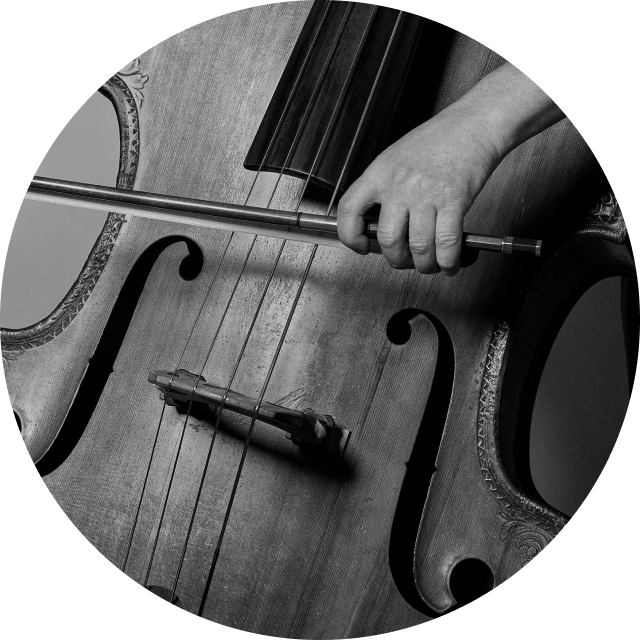
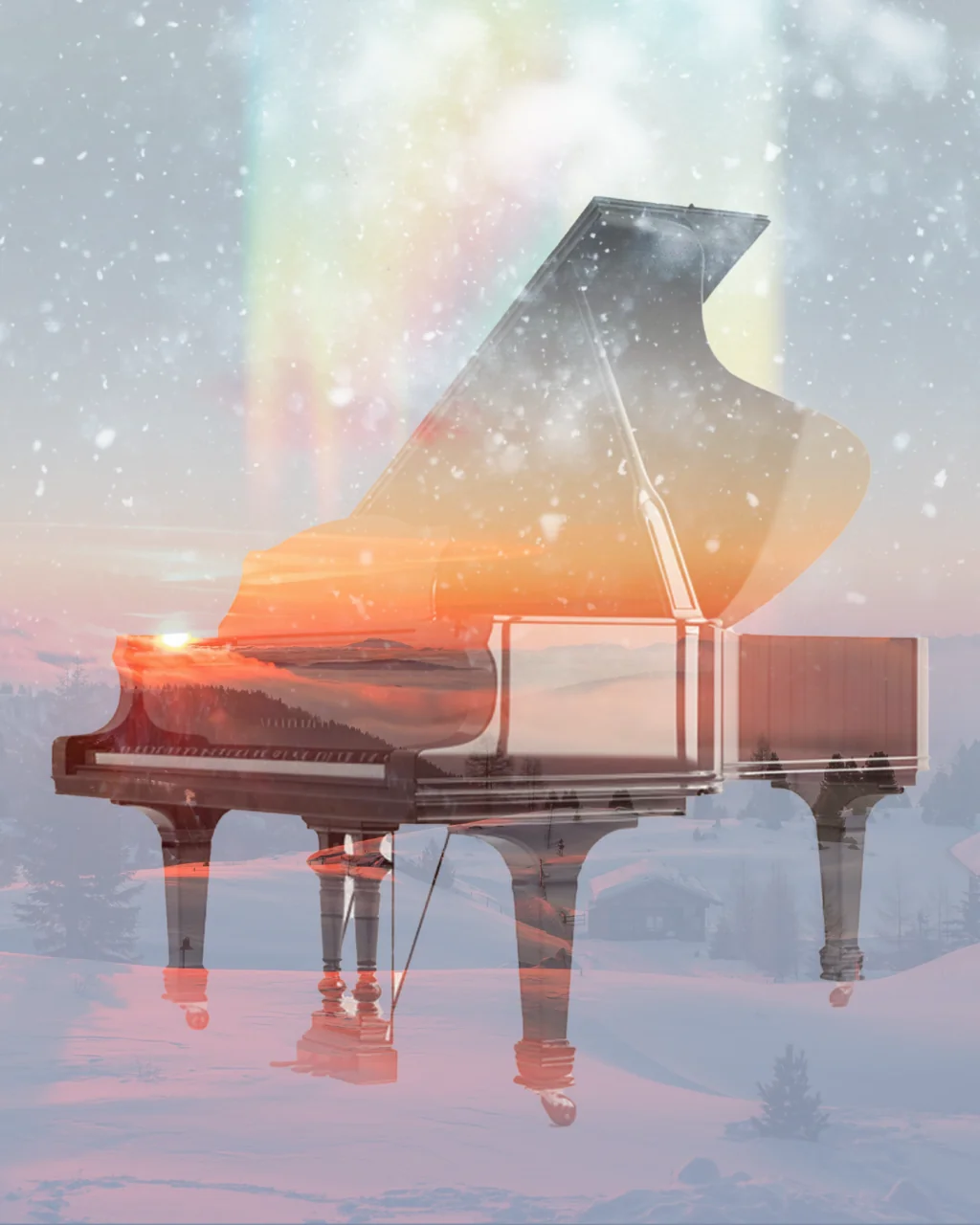


 Location Maison Symphonique de Montréal
Location Maison Symphonique de Montréal Location Maison Symphonique de Montréal
Location Maison Symphonique de Montréal Location Maison Symphonique de Montréal
Location Maison Symphonique de Montréal
